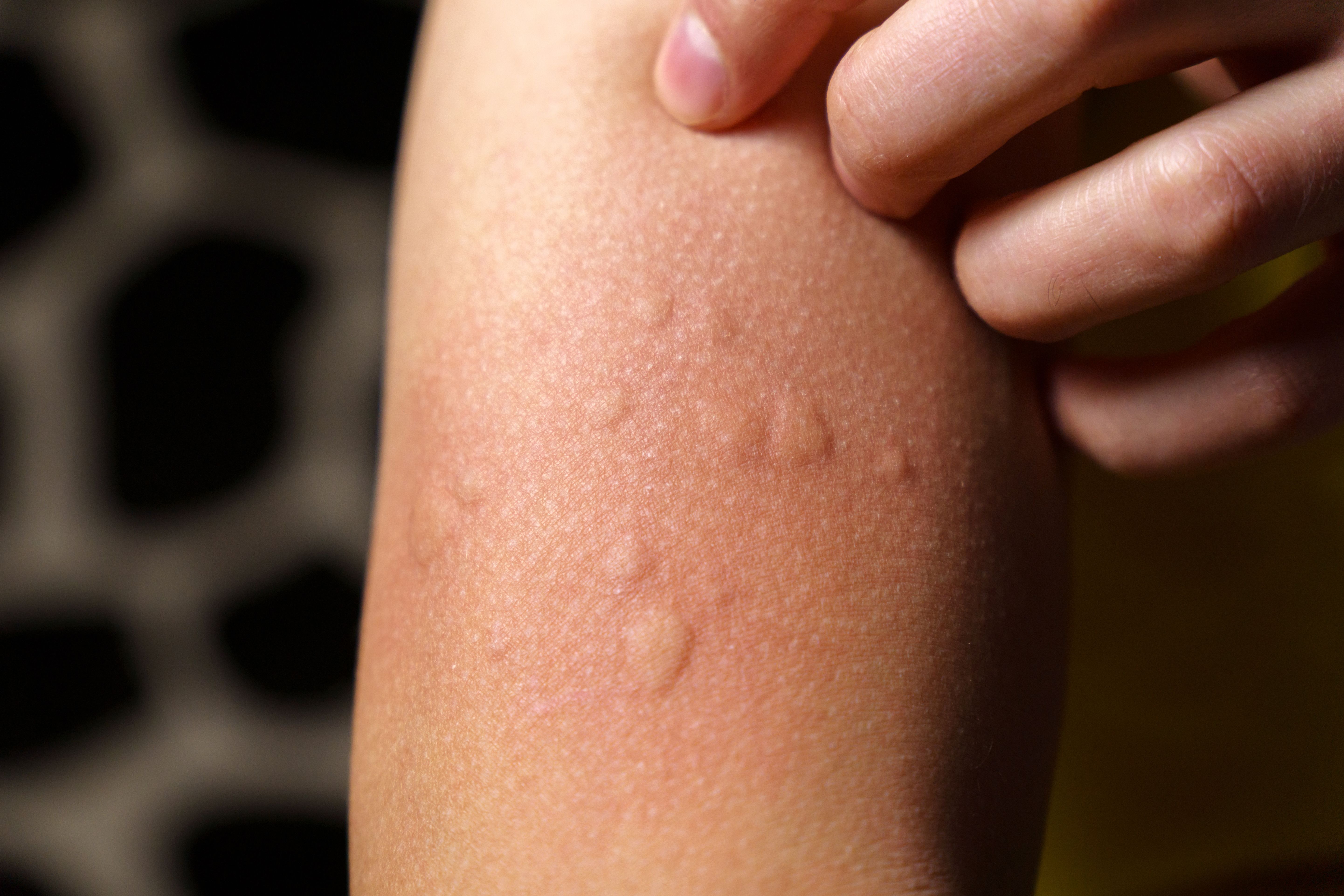- Center on Health Equity & Access
- Clinical
- Health Care Cost
- Health Care Delivery
- Insurance
- Policy
- Technology
- Value-Based Care
Complete Responses Seen With Emerging Therapies for Chronic Spontaneous Urticaria
There have been new developments in treatments for chronic spontaneous urticaria, with several options showing complete response in patients, particularly among those who are difficult to treat.
There are new developments of treatments for chronic spontaneous urticaria, with dupilumab, remibrutinib, and barzolvolimab showing complete response in patients, particularly among those who are difficult to treat. | Image Credit: Алексей Филатов - stock.adobe.com

Novel treatments like dupilumab, remibrutinib, and barzolvolimab are showing promise in achieving complete response for patients with chronic spontaneous urticaria (CSU), an allergy classified skin condition often resistant to standard therapies, according to a study published in Drugs.1
CSU is a mast cell–mediated skin disease that unpredictably presents itself through itchy hives, angioedema, or both for more than 6 weeks. CSU affects more than 80% of patients for over a year and largely or extremely impacts quality of life for about 40% of patients. First-line and second-line treatments achieve complete disease control in only a minimal number of patients with CSU. Researchers conducted the review to provide an update on difficult-to-treat patient populations and the development of emerging drugs for the treatment of CSU and other patient populations.
Patients who are nonresponders to first- and second-line treatment are typically those with autoimmune CSU, who make up at least 8% and up to 69% of all patients with the condition. Autoimmune CSU is identified by high disease activity, autoimmune comorbidities, low total immunoglobulin (IgE) levels, and poor response to antihistamines and omalizumab.
An estimated 16% of patients with CSU were considered late responders to omalizumab because they responded after 2 to 5 months of treatment. Later and slower responses were linked to autoimmune CSU features like low IgE levels and chronic urticaria index positivity.
Patients with CSU-related comorbidities may benefit from treatments targeting more than one disease. Bruton tyrosine kinase (BTK) inhibition can improve autoimmune diseases by reducing IgE autoantibody production and blocking IL-4 receptor α (IL-4Rα) to improve other type 2 inflammatory diseases like asthma, chronic rhinosinusitis with nasal polyps, or atopic dermatitis. Patients with CSU that had a long-lasting course of disease could be induced for long-term disease remission through a disease-modifying treatment.
Along with type 2 inflammation, activated Th2 cells, and cytokine effects, IL-4 and IL-13 substantially contribute to CSU. Dupilumab, a monoclonal antibody (mAb), blocks IL-4Rα, thus inhibiting signaling of both IL-4 and IL-13. In phase 3 clinical trials, 30% to 31% of patients with CSU showed complete response to dupilumab treatment, which had similar treatment-emergent adverse events to placebo across studies A and B (nasopharyngitis, 1.6% vs 5.7%; CSU, 8.1% vs 7.4%; injection-site erythema, 2.4% vs 5.7%). The most common adverse event (AE) was injection site reaction (12%).
BTK regulates mast cell response to its activation by translocating to the cell membrane and phosphorylating downstream targets. It is also present in other immune cells like basophils, B cells, monocytes, and platelets. BTK inhibitors (BTKi) treat CSU through a dual action—they effectively suppress mast cell and basophil degranulation, impeding autoreactive B cell expansion, and reducing mast cell activating autoantibody levels, as shown by remibrutinib's rapid action. Patients with CSU had a 28% to 32% complete response rate during phase 3 trials, with common AEs including respiratory tract infections (11%), headache (6%), and petechiae (4%).
The development and differentiation of mast cells from hematopoietic stem and progenitor cells critically depend on both the tyrosine kinase receptor KIT and its ligand, stem cell factor (SCF). KIT plays a vital role in regulating various mast cell functions, including precursor growth, differentiation, migration, survival, proliferation, maturation, and the release of mediators. Notably, SCF is the primary growth factor for mast cells and functions by binding to KIT.
Barzolvolimab is a humanized IgG1k mAb that binds to KIT with high affinity and thereby inhibits the binding of SCF. Overall, barzolvolimab was well-tolerated in CSU and 38% to 51% of patients showed complete response during phase 2, week 12. The most common AEs for barzolvolimab were changes in hair color (14%), neutropenia/decreased neutrophil count (9%), and skin hypopigmentation (1%).
Janus kinase (JAK) inhibitors have also shown relevant results in cutaneous-related diseases, including atopic dermatitis. However, data supporting the benefits of JAK inhibitors in CSU are limited to case reports. Further research on these drugs should be especially considered.
The drug pipeline in CSU treatment is developing quickly, with omalizumab biosimilars entering the market and novel small molecules and biologics becoming available in the next 1 to 2 years. The FDA recently approved omalizumab-igec (Omlyclo; Celltrion) to reference Xolair (omalizumab), approved with interchangeability status and the first respiratory biosimilar in the US.2
Overall, endotyping patients with CSU and identifying specific biomarkers will help enable tailored treatments in the context of precision medicine and optimizing therapeutic efficacy.1
“Future studies with long-term follow-up will show whether any of the novel treatments, e.g., BTKi and dupilumab, possess disease-modifying properties and will be game-changers in CSU management,” study authors concluded.
References
1. Kolkhir P, Fok JS, Kocaturk E, et al. Update on the treatment of chronic spontaneous urticaria. Drugs. Published online March 12, 2025. doi:10.1007/s40265-025-02170-4
2. Jeremias S. FDA approves first omalizumab biosimilar. The Center for Biosimilars®. March 7, 2025. Accessed April 15, 2025. https://www.centerforbiosimilars.com/view/fda-approves-first-omalizumab-biosimilar
